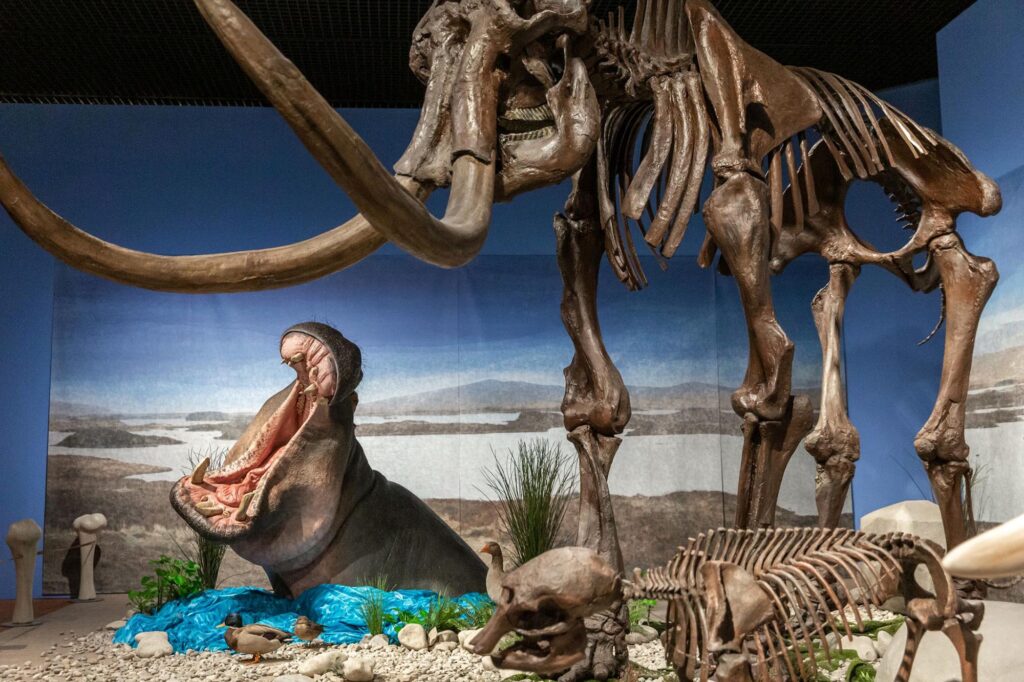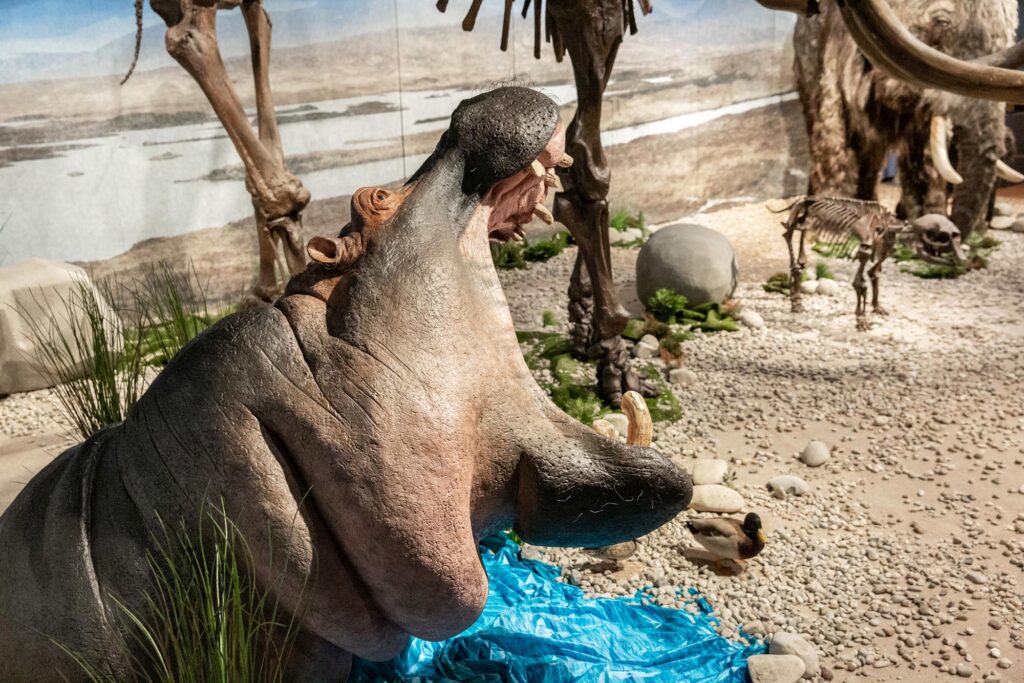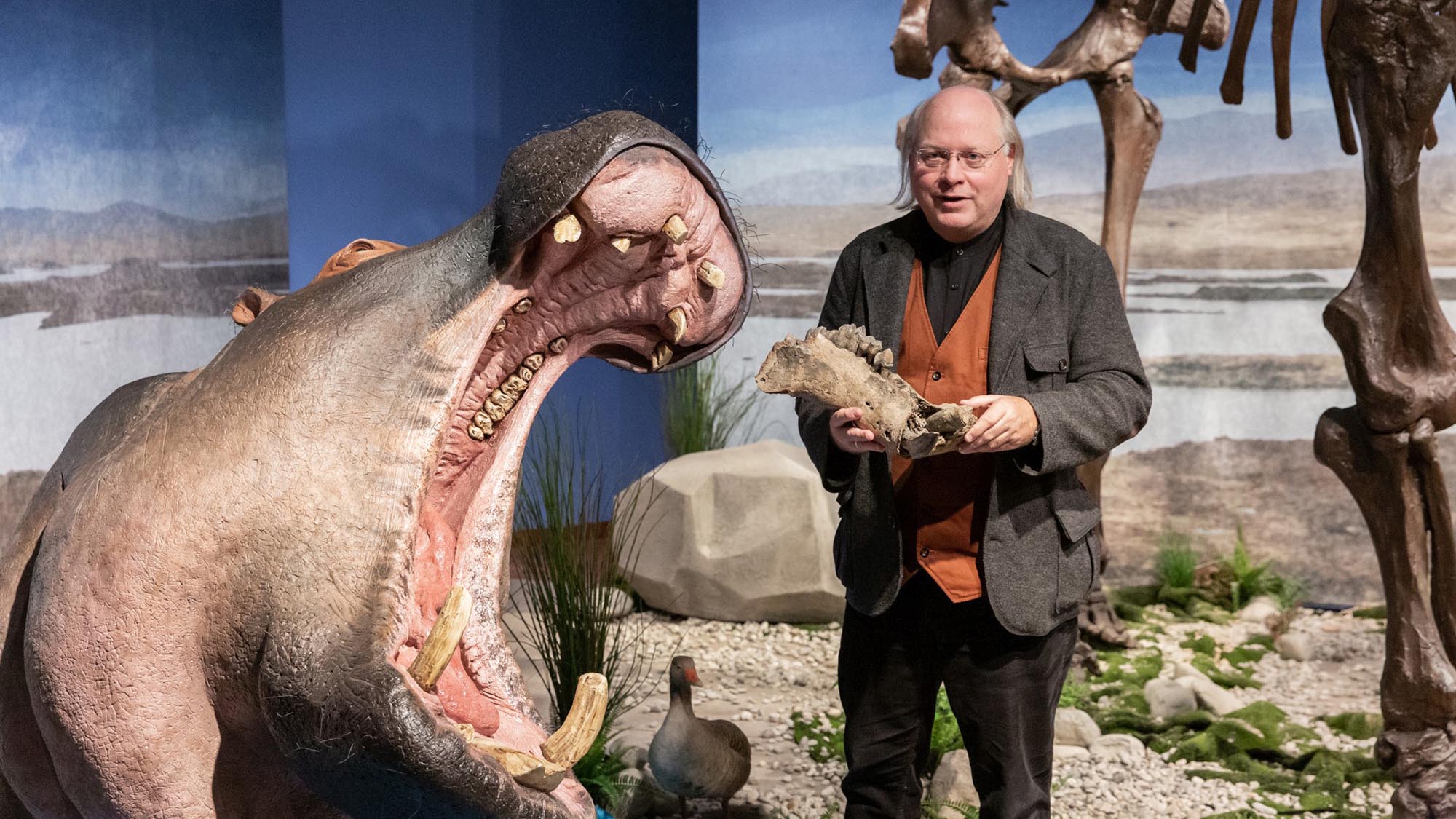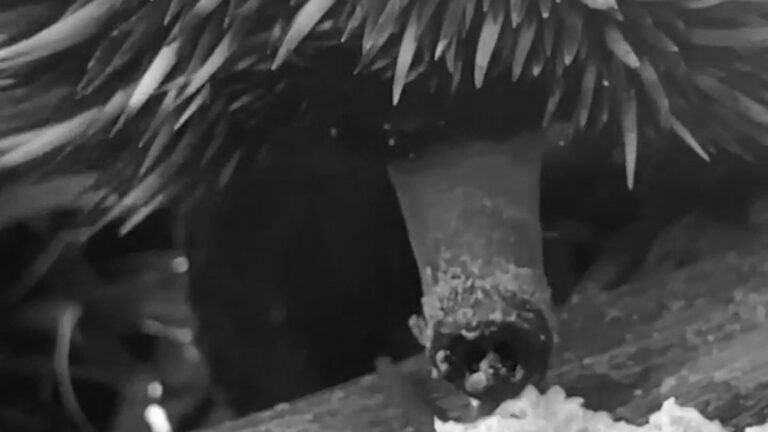A study has revealed that Germany’s Rhine river was home to hippos around 30,000 years ago meaning the mammals that are now only native to Africa once wandered the European river bank side-by-side with woolly mammoths.
It was previously believed that all hippos died out in Germany 116,000 years ago at the end of the last warm period.
Experts from the Reiss-Engelhorn Museums in Mannheim, the Curt Engelhorn Center for Archaeometry and the University of Potsdam examined hundreds of bones during a five-year investigation that has confirmed that hippos inhabited Germany at the same time as the woolly mammoth.
According to a press statement from Reiss-Engelhorn-Museum researchers used radiocarbon dating to confirm that hippopotamus (Hippopotamus amphibious) lived in the Upper Rhine between 48,000 and 30,000 years ago.

(REM, Rebecca Kind/Newsflash)
The flora and fauna of the Upper Rhine, which runs between Basel in Switzerland and Bingen in Germany, would have been vastly different during this period.
The river would have been home to hippos that can reach a weight of 1,500 kilogrammes (3,310 lbs) along with giant woolly mammoths and cave lions amongst other now-extinct species.
The hippopotamus is a large herbivorous, semiaquatic mammal that is now native only to sub-Sharan Africa.
The International Union for Conservation of Nature (IUCN) categorises the hippo as a ‘vulnerable species’ on its Red List of Threatened Species which means that that the species will face extinction in the near future unless measures are taken to protect it.
Wilfried Rosendahl, the Museum’s Director-General, said: “The hippopotamus is a real Ice Age inhabitant on the Rhine. This shows that the animals were able to adapt well to the corresponding temperatures and environmental conditions in the cold-age Upper Rhine Rift.”
Dr Ronny Friedrich, an age determination expert at the Curt Engelhorn Center for Archaeometry, said: “It’s amazing how well the bones are preserved. It was possible to take valuable samples from many skeletal remains.”
Dr Friedrich and his colleagues examined a total of 30 hippos and confined that they lived in the upper Rhine area at the same time as mammoths, woolly rhinos and cave lions.
A further investigation supports the conclusion that the climate in the Upper Rhine Rift Valley was milder than previously assumed.
In addition to bones, wood finds were also analyzed and it emerged that oak trees with a circumference of up to 80 centimetres (41.4 inches) grew around 40,000 years ago in the Upper Rhine region.

(REM, Rebecca Kind/Newsflash)
Rosendahl said: “In the last Ice Age, stately oaks still grew in our region – something that we have not previously thought possible.”
The research was carried out as part of the “Ice Age Window Upper Rhine Rift” project.
The results of the research will be on exhibition at the museum in the ‘Ice Age Safari’ section where visitors will be taken a journey from the last age from 40,000 to 15,000 years ago displaying models of hippos next to giant woolly mammoths.
To find out more about the author, editor or agency that supplied this story – please click below.
Story By: Peter Barker, Sub-Editor: James King, Agency: Newsflash
The Ananova page is created by and dedicated to professional, independent freelance journalists. It is a place for us to showcase our work. When our news is sold to our media partners, we will include the link here.




